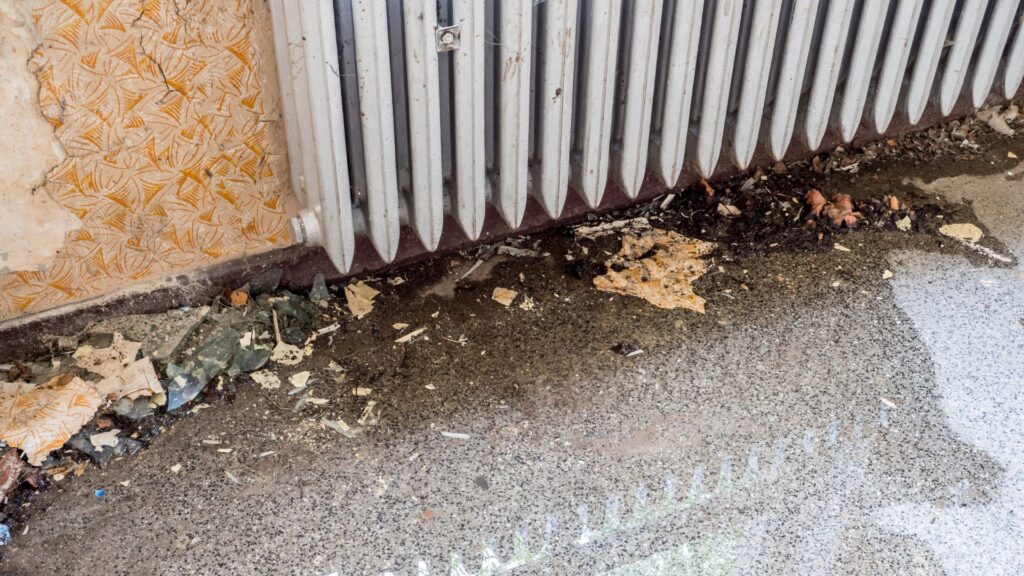
There’s no doubt that water damage can be hugely disruptive, destructive, and costly.
When you think of water damage, you might envisage devastating natural disasters such as hurricanes, monsoons and tsunamis.
But water damage can occur with even ‘mundane’ causes, like leaking pipes and cracked gutters.
Once water gets into a property, serious damage can be caused very quickly – even If it cannot be initially seen (or smelt). It can wreck furniture, warp wooden floors, and create serious mould problems within hours.
That’s why it is so crucial for professional water damage clean-up and restoration companies to ensure your property is properly cleared and dried.
However, you can take several immediate steps to help with the initial water damage repair process.
This blog will look at the four most crucial tips for protecting your premises from water damage.
What Is Water Damage?
Firstly, let’s look at the definition of water damage.
It can be simply defined as ‘water destroying the interior of your property’.
As mentioned above, there can be numerous causes, including:
- Burst pipes
- Leaking roofs
- Overflowing sinks or toilets (which could also lead to sewage damage
- Leaking appliances
The damage caused can also be influenced by the type of water involved.
There are three different types of water:
- Clean water (usually from rain, leaky pipes or condensation)
- Greywater (wastewater from washing machines, dishwashers, kitchen sinks)
- Blackwater (from sewage systems or rivers and lakes).
Each type of water brings different risks to building structures and human health. Professional water damage restoration specialists like Vinci Response will be able to advise on the best immediate, mid and long-term solutions for all types of water.
Steps You Can Take To Minimise Water Damage
Now that we’ve identified the different types of water that can affect a property and defined what water damage actually is, let’s see what can be done to initially help minimise its devastating impact.
Turn off the Water Source and Disconnect the Power
Once you have identified a leak or flooding water in your building, you should try to locate the source and shut it off as soon as possible.
Suppose the water is coming from a sink. In that case, this should be relatively straightforward as the water connection and relevant shutoff valve will hopefully be easy to access.
However, you may need to turn off the property’s water main for unseen pipes. There are no standard locations for main shutoff valves, so it’s always useful to know their location before you urgently need them. They could be on an outside wall, inside a garage, or next to the water heater.
Keep an Eye Out for Mould
The health and safety risks of mould can be hazardous.
Professional water damage restoration specialists will be able to help identify any hidden mould patches.
Still, it’s worth keeping an eye out for some of the more obvious signs.
It only takes 24 to 48 hours for mould to take hold.
Small patches and mould outbreaks on walls and ceilings are easily manageable, but a professional should handle widespread and severe mould problems.
Dispose of Porous and Damaged Materials
One of the most heartbreaking results of water damage is the destruction of personal possessions.
Sadly, many porous materials in a water-damaged property will have to be removed and thrown away as they either become damaged beyond repair and/or harbour mould and mildew. Common porous materials often in need of disposal include:
- Carpet
- Upholstered furniture
- Mattresses
- Rugs
Deep Clean Affected Surfaces
Once you have thrown away everything that needs to be disposed of, you could disinfect any easily accessible flooded surface.
Most of the time, a good bleach solution will work best. You must wear gloves, a face mask, and safety goggles. The bleach should be enough to kill off any mould spores developing before the professional cleaners can get on site.
Call Vinci Response For Professional Water Damage Repair Work
This blog has looked at some of the most critical things you can do yourself after discovering water damage to a property.
So long as you’re not in immediate danger, these steps could help protect flooded buildings from some of the longer-term impacts.
We must stress that dealing with unknown water types and causes of flooding can be very dangerous.
If in doubt, we would always recommend calling the emergency services and then a professional cleaning company for complete peace of mind.
Vinci Response can help clean up, restore and dry any flooded or water-damaged property.
Contact us today to find out more.